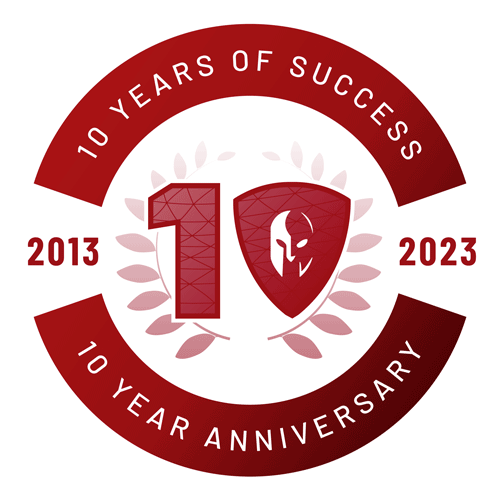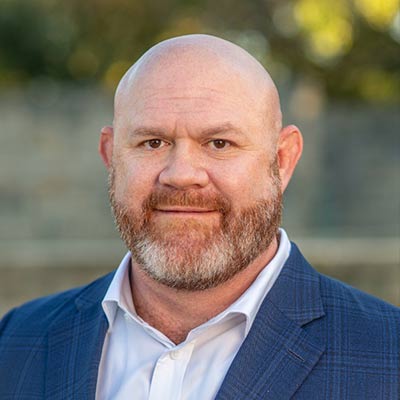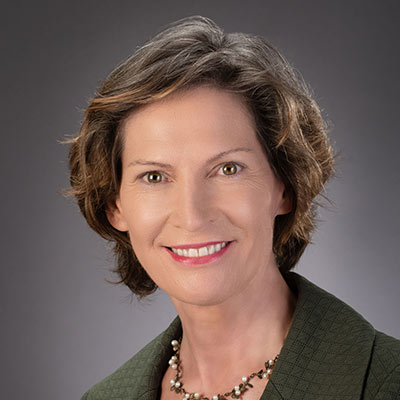Introduction
Hey there, excellent readers! Today we’ve got something totally tubular to share—just like Bill and Ted, we’re taking you on an adventure through time, but this time it’s the history of encryption! So jump into our metaphorical phone booth, and let’s take a ride back to the days of ancient ciphers and move right on up to the present-day encryption algorithms that help us keep our data bodaciously secure.
Oh, and before we forget, if you’re stoked about secure stuff, you should definitely check out Insider Direct. They’ll give you the most excellent cybersecurity products at Secutor’s most excellent cost, dude! So you save big time while staying safe online. Whoa!
The Ancient Greeks: Socrates and the Scytale
Scene: Bill and Ted are in Ancient Athens, wearing toga-like garments. They’re standing in a forum with the great philosopher Socrates, who’s holding a wooden rod called a ‘Scytale.’
Bill: “Dude, like, what’s that stick thingy?”
Socrates: “Ah, this, my friends, is a Scytale. It’s one of the earliest forms of encryption, used to secure important messages in transit.”
Ted: “Whoa, encryption in ancient times? That’s most excellent!”
Socrates: “Indeed. We wrap a piece of parchment around the rod and write the message along its length. Once it’s unwound, the message appears as random letters. Only someone with a rod of the same diameter can read it.”
Bill: “Dude, that’s like the original password!”
Ted: “Totally, man! So, like, how do you know that the stick and the parchment are safe? Did you pen-test it?”
Socrates: “Ah, pen-testing, a concept we’ve not yet devised, but a most intriguing idea. We do, however, employ trusted messengers and use secret routes for message delivery.”
The Romans: Julius Caesar and the Caesar Cipher
Scene: Bill and Ted land in ancient Rome, just in time for a grand feast. There’s a large table full of grapes, cheese, wine, and other Roman delicacies. Julius Caesar sits at the head of the table.
Bill: “Whoa, this is like, totally luxurious, man!”
Ted: “Totally! Dude, what’s the occasion?”
Julius Caesar: “Ah, welcome travelers! We are celebrating recent victories, and nothing says victory like secure communication on the battlefield!”
Bill: “Secure communication, you say? Tell us more!”
Julius Caesar: “Certainly. I’ve devised a cipher, a simple yet effective method to encrypt messages. I shift each letter in the plaintext by a fixed number of positions down the alphabet. It’s been quite effective in preventing the enemy from understanding our strategies.”
Ted: “Dude, that’s like, an early version of encryption!”
The Duke of Mantua's Cipher:
Upping the Ante in Encryption
Scene: Inside the castle, Princesses Joanna and Elizabeth (Historical Babes!) lead Bill and Ted to a room where a distinguished gentleman is pouring over scrolls and charts.
Joanna: “Bill, Ted, allow us to introduce you to the Duke of Mantua. He’s a major player in the cryptographic scene.”
Elizabeth: “The Duke has come up with a way to make messages even more secure. He’s really upped the ante!”
Duke: “Ah, fresh faces! Always eager to learn, I hope? Welcome, welcome!”
Bill: “Hey Duke, what’s cookin’? What’s all this stuff?”
Duke: “Ah, this is my latest invention in cryptography: the homophonic substitution cipher. It’s a way to encrypt messages so that each letter can be represented by multiple symbols.”
Ted: “Whoa, so like, if someone tries to break it, they’d get all mixed up?”
Duke: “Exactly, young squire! For example, the letter ‘E’ might be the most common letter in English, but in my system, ‘E’ could be represented by, say, 4, 7, or even 11. It muddles up frequency analysis, making the cipher much harder to crack.”
Bill: “Dude, that’s like creating multiple paths to the same destination, confusing anyone who’s trying to follow you!”
Ted: “Totally! So, like, you’re adding layers to the security?”
Duke: “You’ve grasped it well! In cryptography, unpredictability is your best ally. Multiple representations for each letter add a layer of complexity that keeps prying eyes at bay.”
Elizabeth: “We’ve already begun using it for our secret correspondences. It’s proving to be most effective.”
Joanna: “With the Duke’s cipher, we can send messages with less worry that they’ll be intercepted and deciphered.”
Bill: “Man, that’s like future-level security right there!”
Ted: “For sure, dude! It’s all about staying one step ahead of the game!”
The Renaissance: Leonardo da Vinci and Mirror Writing
Scene: Bill and Ted appear in a workshop surrounded by strange machines, anatomical drawings, and half-finished paintings. Leonardo da Vinci is hunched over a desk, sketching something with his left hand.
Bill: “Whoa, look at all this rad stuff! Dude, are you like the first steampunk?”
Ted: “Yeah, you’re like, renaissance-punk or something!”
Leonardo da Vinci: “Ah, welcome! You admire my work? These are my designs and sketches, stored in a way only I can easily read them.”
Bill: “Wait, what’s so special about how they’re stored?”
Leonardo da Vinci: “I write in mirror image, a method of writing where the letters are reversed. It’s simple to decipher if you know how, but it offers a layer of secrecy that keeps my intellectual property safe from prying eyes.”
Ted: “Man, that’s most excellent!”
World War II: Alan Turing and the Enigma Machine
Scene: Bill and Ted in a 1940s war room, looking at the Enigma Machine.
Ted: “Whoa, dudes! We’ve fast-forwarded big time! What is this place?”
Bill: “Ted, my historically challenged friend, this is World War II, and that dude over there—drenched in genius and furrowed brows—is Alan Turing!”
Ted: “The Turing? Like Turing machine, Turing test Turing? The father of computer science?”
Bill: “Exactly, dude! He’s working on breaking the Enigma code. That’s a super complex encryption method the Germans are using to send secret messages.”
Alan Turing: “Ah, you two must be the fabled time travelers I’ve heard so much about. Would you care to help me with the Enigma Machine?”
Ted: “Enigma? Sounds puzzling.”
Bill: “Totally, man! But with your big brain and our time-traveling awesomeness, we can totally beat this thing!”
Alan Turing: “The Enigma Machine uses a series of rotors and settings that make each letter change every time you type it. It’s a remarkably sophisticated piece of encryption technology for its time. We’ve had some success, but it’s a constant race against the clock.”
Ted: “Whoa! So, you’re saying the machine is like a shape-shifter for words?”
Alan Turing: “In simple terms, yes. It constantly alters the encryption, which means that even if you decode part of the message, the next part uses a different set of rules. We’ve built a machine—what we call the Bombe—to help us sort through the countless configurations more quickly.”
Bill: “Dude, that’s pretty bodacious!”
Alan Turing: “We’ve had to study linguistics, probability, and apply some serious mathematical algorithms to even stand a chance.”
Ted: “Sounds heavy. But hey, Alan, if you could see the encryption tech of the future, your mind would be totally blown! Stuff gets way more complicated but also way cooler!”
Alan Turing: “I can only imagine. But for now, every message we decode is a potential lifesaver. This isn’t just a puzzle; it’s a moral imperative.”
Bill: “Totally get it, man. This is like the most epic boss level ever. Beat the code, save the world!”
Alan Turing: “Well put, gentlemen. Now, if you’ll excuse me, I have to get back to work. The future may be secure, but our present is still very much at risk.”
Ted: “Keep on decoding, Alan! You’re a real hero, dude!”
Bill: “Totally! And remember, the best is yet to come!”
Gazing into the Crystal Ball:
The Future of Encryption is Now
Scene: Bill and Ted stand in a futuristic council chamber, surrounded by wise-looking individuals in ornate robes. Holographic screens float around the room, displaying complex algorithms and futuristic technologies. The room is aglow with the radiance of quantum-powered machinery.
Bill: “Whoa, dudes! This place is most excellent! So, like, what’s the future got in store for us, encryption-wise?”
Future Council Leader: “Ah, William S. Preston, Esq., and Theodore Logan, welcome to our time. You’ve arrived at a moment where what you would call ‘the future’ of encryption is actually our reality.”
Ted: “You mean like, it’s already gotten all gnarly?”
Future Council Leader: “Precisely, Theodore. Quantum computing has revolutionized encryption. What once took millennia to decipher with your era’s computers, is but a moment’s work for ours. However, let me introduce you to Quantum-Safe Cryptography.”
Bill: “Quantum-Safe Cryptography? That sounds totally non-heinous!”
Future Council Member #2: “Indeed, William. With the advent of quantum computing, traditional encryption schemes would be easily broken. But Quantum-Safe Cryptography employs mathematical algorithms that are impervious to quantum attacks.”
Ted: “So it’s like the superhero of the encryption world?”
Future Council Member #3: “Aptly put, Theodore. We also employ Homomorphic Encryption, which allows us to perform computations on encrypted data without ever having to decrypt it.”
Bill: “Whoa, that’s most triumphant. So you mean even your toasters are like, secure?”
Future Council Member #2: “Absolutely, William. Even the most seemingly inconsequential Internet of Things devices in our time are fortified data bunkers, thanks to our advanced state of encryption. Your toast is encrypted until it pops!”
Future Council Leader: “We’ve even introduced Biometric Multi-Factor Authentication, requiring DNA confirmation for access to certain high-level information. Now you not only need to know something and have something but also be something to get in.”
Ted: “Whoa! So like, you’re you but also triple you, just to make sure you’re you!”
Future Council Leader: “Exactly. Encryption is an ongoing journey, not a destination. We must remain vigilant and adapt to new challenges as they arise.”
Why Encryption Matters Today
Alright, party on, people! If you think encryption is just for computer nerds or secret agents, it’s time for a reality check. Let’s break it down: When you’re texting your BFF about that totally tubular concert you just went to, or logging into your bank account to see if you can afford that sweet new skateboard, encryption is what keeps your info from going public like a bad hair day in high school.
Imagine you’ve got a diary—you know, the one with all your secret crushes and your dream of winning air guitar contests. Now, you wouldn’t want someone just flipping through it like it’s the latest comic book, right? Well, that’s what encryption does; it puts a gnarly padlock on that diary. It’s like having a personal bouncer for your data, making sure no uncool characters get past the velvet rope. The evolution of encryption has been like going from a basic garage band to the grandiose rock operas of today. The tech has gotten way more intricate, but the goal is still the same: to keep your information safe and sound.
Now, what’s the point of having all these rad cybersecurity advancements if you’re not gonna use ’em? That’s like having a primo skateboard and never learning to kickflip. Which brings us to this: it’s super important to get involved in your own cybersecurity and be proactive, not reactive, man.
WHAT IS INSIDER DIRECT?
Conclusion
So there you have it, time travelers! From Socrates all the way to the future, encryption has had a long and excellent journey. Understanding this history isn’t just a fun adventure; it’s essential for anyone looking to grasp the importance of cybersecurity today.
Dudes, be excellent to each other and practice good cybersecurity. Until next time, party on!
Get in touch with us
Secutor Cybersecurity is a trusted partner comprised of industry leading experts in the fields of Cybersecurity and Governance, Risk and Compliance. We partner with our clients to deliver on-demand solutions tailored to expertly navigate the regulatory demands of their specific industries.
Our proven track record of successfully exceeding client expectations is achieved through the combination of our methodical approach, advanced technologies, subject matter experts, and synergy with client team members.
Secutor is your team of world-class problem solvers with vast expertise and experience delivering complete solutions keeping your organization protected, audit-ready, and running smoothly.







